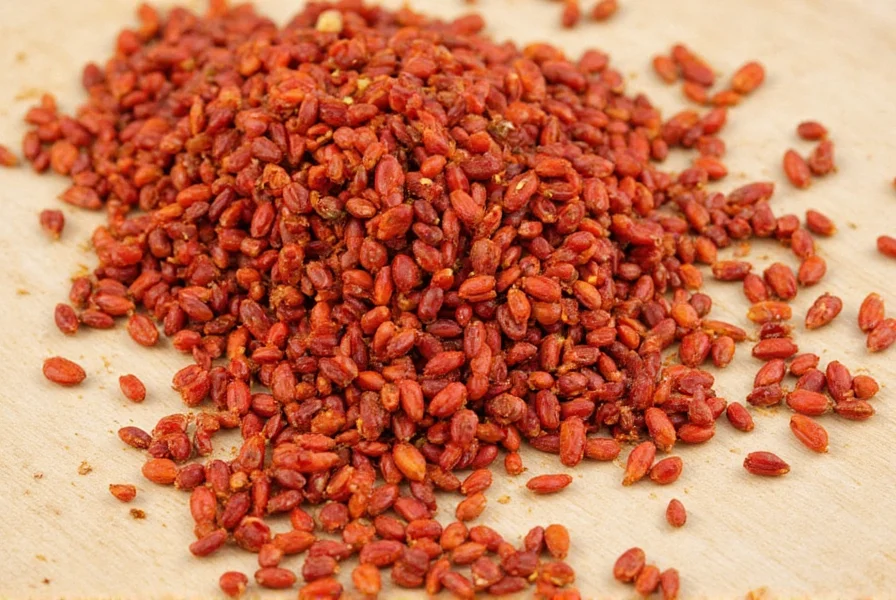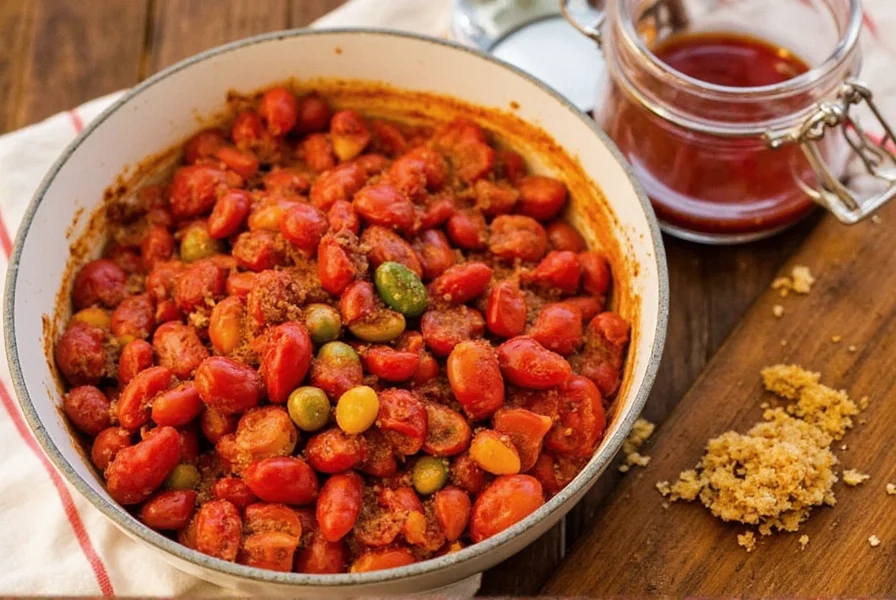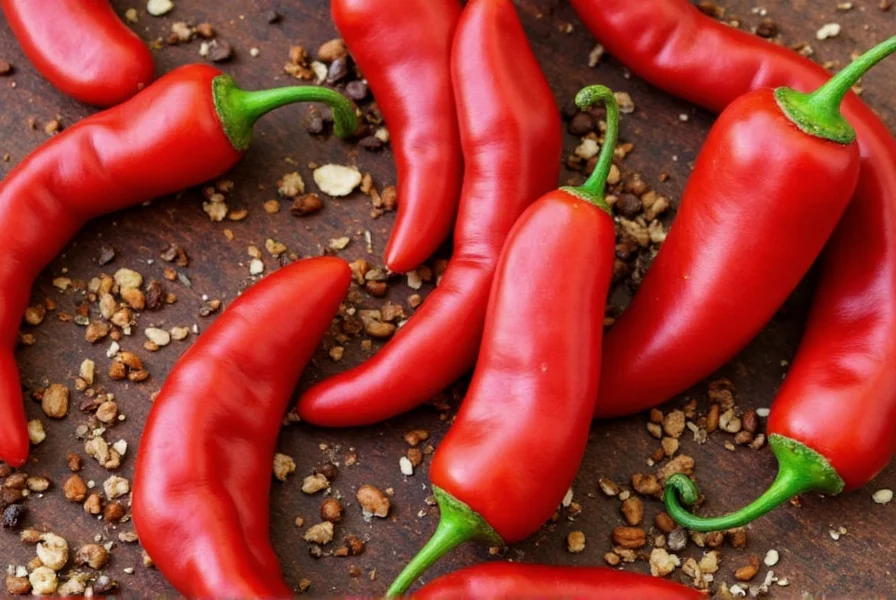To season chili perfectly, follow these essential steps: start with quality ingredients, layer spices at the right time, balance heat levels, adjust seasoning gradually, and let flavors meld. This guide provides a detailed, step-by-step approach to achieving restaurant-quality chili.

Why Proper Seasoning Matters
Chili seasoning isn't just about adding heat - it's about creating a balanced flavor profile where each spice complements the others. Proper seasoning enhances natural flavors, creates complexity, and ensures your chili has depth that lingers on the palate. Scientifically, toasting spices before adding them releases volatile oils that significantly improve aroma and taste.
Core Seasoning Principles
Mastering chili seasoning requires understanding these fundamental principles:
| Principle | Why It Matters | How to Apply |
|---|---|---|
| Layering | Spices release flavors at different temperatures and times | Add base spices early to bloom in oil, delicate spices later |
| Balance | Prevents any single flavor from overpowering others | Combine sweet, salty, sour, bitter, and umami elements |
| Temperature Control | Heat affects spice intensity and flavor development | Simmer gently to avoid burning spices |
| Resting Time | Allows flavors to fully integrate and mature | Let chili sit for at least 2 hours or overnight before serving |
Top 7 Essential Spices for Chili
These seven spices form the foundation of great chili. Each serves a specific purpose in creating a complex flavor profile:
- Cumin - Provides earthy warmth and depth. Use 1-2 tsp per pound of meat. Toast whole seeds before grinding for maximum flavor.
- Chili Powder - A blend typically containing cumin, garlic, oregano, and crushed chilies. Look for blends with real chili peppers as the first ingredient.
- Smoked Paprika - Adds rich smokiness without excessive heat. Use 1-2 tsp for depth. Spanish smoked paprika offers the best flavor profile.
- Garlic Powder - Provides savory depth. Use 1 tsp per pound of meat. Fresh garlic can be added later for brighter flavor.
- Onion Powder - Enhances sweetness and body. Use 1 tsp per pound of meat. Better than fresh onion for consistent flavor distribution.
- Oregano - Brightens the overall flavor. Mexican oregano has a more complex flavor than Mediterranean varieties.
- Cayenne Pepper - For adjustable heat. Start with 1/4 tsp and adjust gradually. Remember that heat builds over time.
| Ingredient | Scoville Heat Units | Flavor Profile | Best Use Case |
|---|---|---|---|
| Jalapeño Peppers | 2,500–8,000 SHU | Grassy, fresh heat | Mild heat with vegetable-like flavor |
| Chipotle Powder | ~10,000 SHU | Smoky, medium heat | Adding depth to stews and barbecue sauces |
| Hatch Green Chilies | Varies (Mild to Hot) | Vegetal, complex | Regional authenticity for New Mexico-style chili |
| Cayenne Pepper | 30,000–50,000 SHU | Sharp, direct heat | Quick heat boost without altering flavor profile |
| Habanero Powder | 100,000–350,000 SHU | Fruity, intense heat | For serious heat seekers with complex flavor |
Professional Buying Guide for Chili Spices
When selecting chili spices, focus on freshness and purity rather than brand names. Here's what to look for:
- Whole vs Ground: Whole spices retain flavor longer. Toast and grind cumin seeds yourself for the best flavor.
- Freshness Check: Smell spices before buying. They should have a strong, pleasant aroma. Dull or musty smells indicate old spices.
- Storage Tips: Store spices in airtight containers away from light and heat. Refrigerate paprika and cayenne for longer freshness.
- Quality Indicators: Look for spices with no fillers, artificial colors, or anti-caking agents. Check expiration dates.
Pro Techniques for Perfect Seasoning
These professional techniques will elevate your chili from good to exceptional:
- Toast Spices: Dry-toast whole spices like cumin seeds in a pan for 1-2 minutes before grinding. This unlocks essential oils and intensifies flavor.
- Bloom in Oil: Add ground spices to hot oil for 30-60 seconds before adding liquids. This releases volatile compounds and enhances flavor.
- Layer Timing: Add base spices (cumin, paprika) early to bloom in oil, then add delicate spices (oregano, salt) in the last 30 minutes of cooking.
- Acid Balance: Add a splash of vinegar or lime juice at the end to brighten flavors and cut through richness.
- Umami Boosters: Add 1 tsp of soy sauce or 1 tbsp of tomato paste for depth without overpowering the chili flavor.
- Taste & Adjust: Taste every 15 minutes during cooking. Add salt in small increments (1/4 tsp at a time) to avoid over-seasoning.

Common Mistakes to Avoid
Even experienced cooks make these seasoning mistakes:
- Adding all spices at once - prevents proper flavor development
- Using stale spices - results in flat, dull flavor
- Adding salt too early - can make meat tough and alter flavor balance
- Overpowering with heat - neglecting other flavor elements
- Not letting chili rest - flavors don't have time to meld properly
Conclusion
Perfect chili seasoning is a science of balance and timing. By understanding how each spice contributes to the flavor profile, using proper techniques, and adjusting based on taste, you can create chili with restaurant-quality depth and complexity. Remember: great chili isn't about heat alone, but about harmonizing all flavor elements to create something greater than the sum of its parts. Start with quality ingredients, layer your spices thoughtfully, and taste as you go to achieve chili that truly sings.












 浙公网安备
33010002000092号
浙公网安备
33010002000092号 浙B2-20120091-4
浙B2-20120091-4